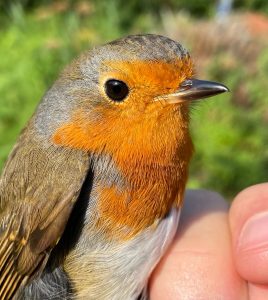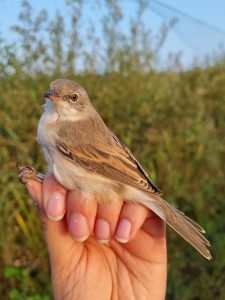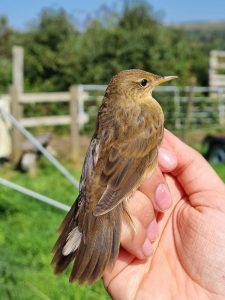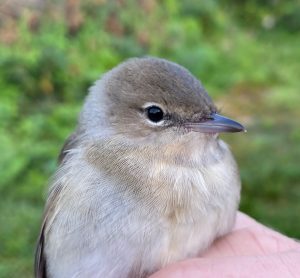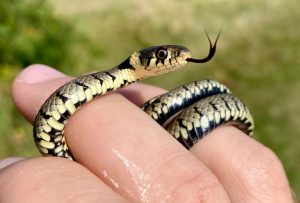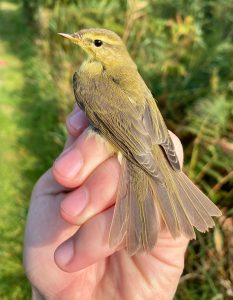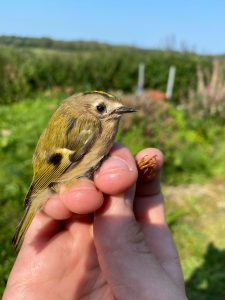A period of generally easterly winds. Following a couple of fairly successful swallow sessions we tried a third on 31 August, then had a wind affected standard daytime session on 4 September.
The total over the two sessions is shown in the table below:

The swallow session was a quiet one. No large flock formed, and no martins were amongst the catch. The only notable finding was that the ratio of adults to juveniles had increased markedly since the previous week (to approximately 1:5), potentially indicating that adults had finished breeding and were wandering in order to feed up ahead of migration.
Otherwise, the features of the catch were:
- Another four grasshopper warblers, taking our total to a reasonably respectable 11 for the year. There was one adult, with the remainder being juveniles.
- A September garden warbler, which is reasonably notable. Overall, garden warbler is a relatively scarce autumn passage migrant in the marsh (and in Gower), which is briefly common in August. Numbers caught each year at Oxwich vary with the weather and our ability to take advantage of suitable windows of opportunity to catch them.
- A good day total of 58 goldfinches. These were mostly youngsters, but also included adults in main moult.
- Another 24 new greenfinches. Two of these were youngsters that were in main moult (most young birds undertake a partial post juvenile moult that does not involve primaries – whereas adults do moult primaries post breeding). One of the two had been initially ringed as a recently fledged juvenile (in June), while the other was clearly a juvenile based on head pattern (albeit these feathers will soon be moulted). Both birds will certainly pose some difficulties in terms of ageing later in the season if we recapture them.
Otherwise, it is nice to see the siskins continue to come. We are getting close to 200 ringed this year, which always feels a good marker. Both siskins and goldfinches move around a lot, and we have had some very good recoveries, including siskins to various parts of Scotland, and goldfinches to Ireland, Lundy, Devon and Dorset. The reed and sedge warblers are now present in low numbers, and the adults appear to have moved on already. It was too windy to catch tree pipits (although several were heard overhead); grey wagtail movement has started, but the lack of flash pooling in the rides will make it difficult to entice them in over the coming weeks.
Checks of our reptile mats resulted in common lizard and grass snake being recorded, but the beautiful young adder that briefly took up residence on the edge of the marsh appears to have found a new place to stay.
Thanks to those who have made it out over the two visits: Heather Coats, Keith Vaughton, Val Wilson, Jo Conway, Amy Schwartz, Dionne Jenkins, Miguel Lurgi, Tom Wright, Andrew Bevan and Dan Jenkins-Jones.
Photos, courtesy of Tom and Amy are below.
Owain Gabb
5 September 2021
